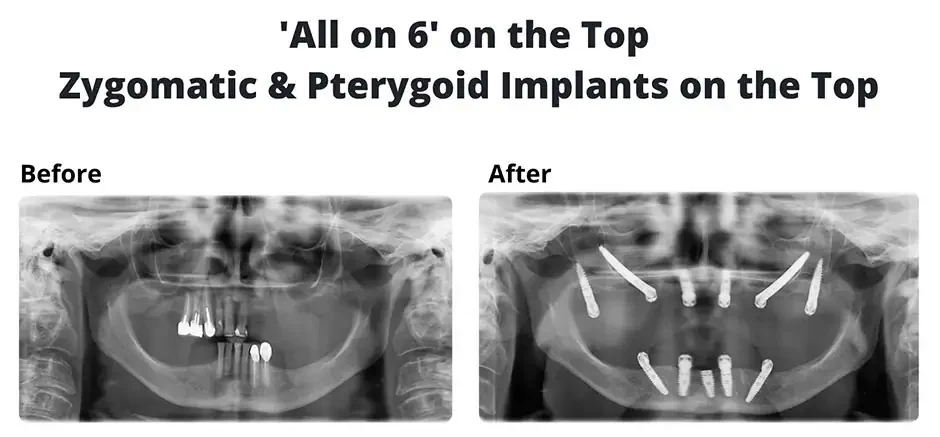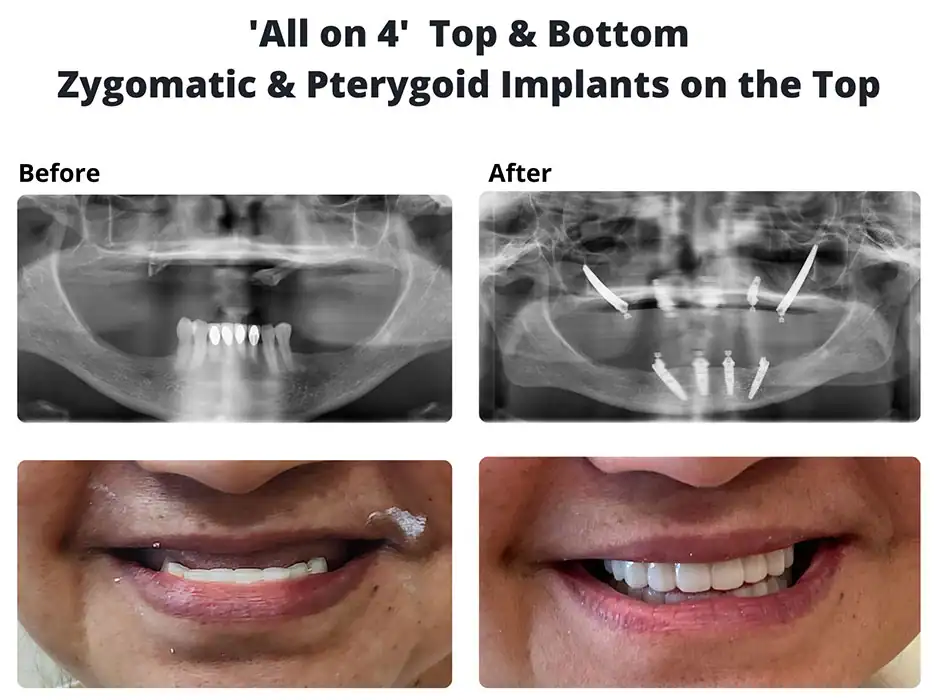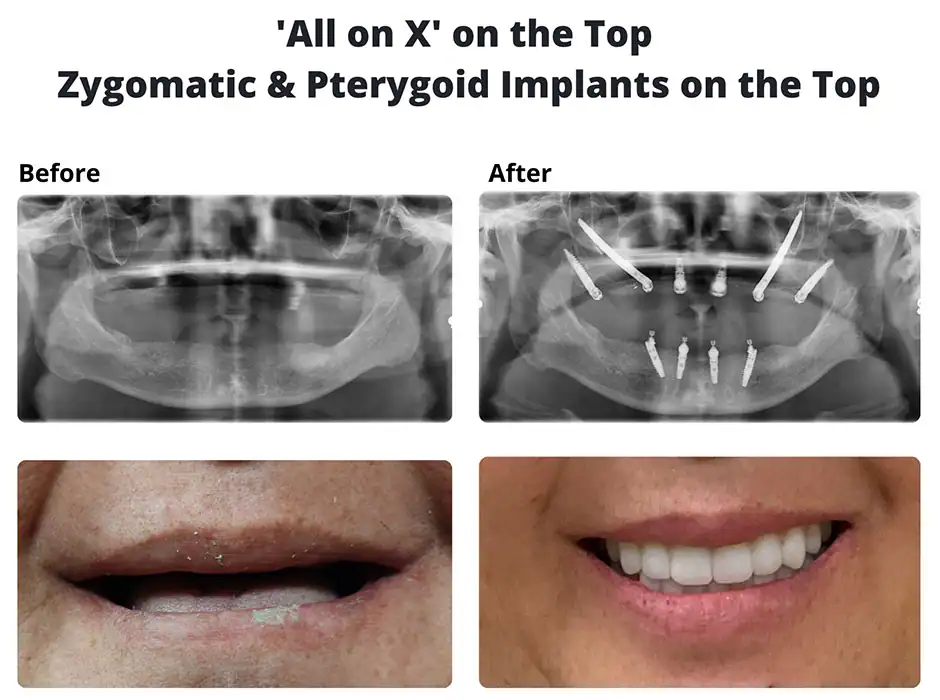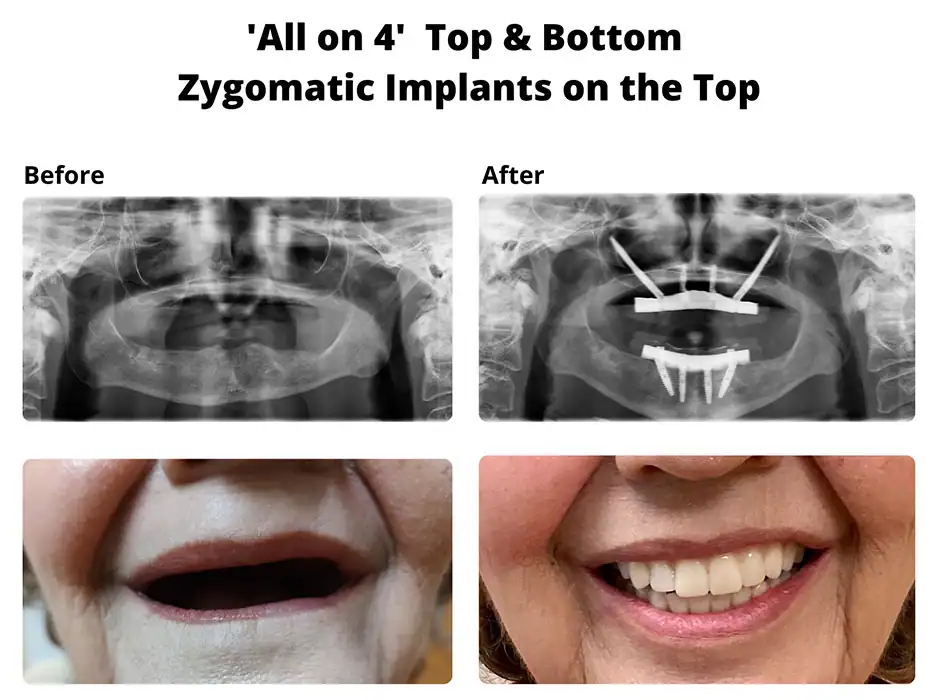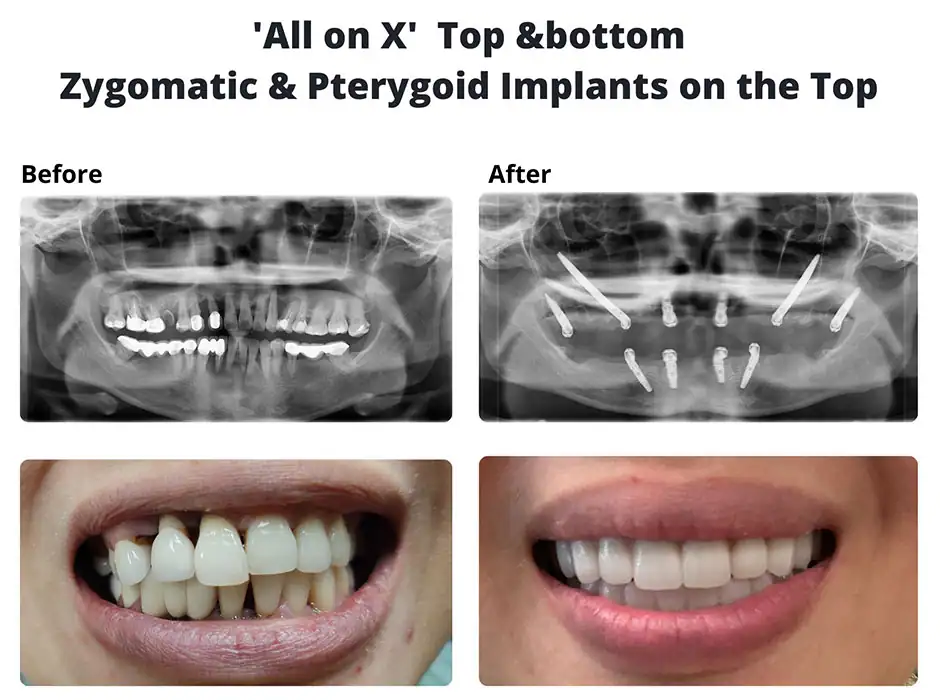Benefits of Zygomatic and Pterygoid Implants
Both Zygomatic and Pterygoid implants offer transformative benefits for patients seeking a permanent solution to missing teeth:
- Immediate Results: Transition from a removable denture to a fixed dental bridge in as little as one day, allowing you to enjoy your new smile without delay.
- Improved Quality of Life: Enjoy a varied diet without fear of dentures causing discomfort or slipping, enhancing your overall nutrition and well-being.
- Long-Term Stability: Both implant types offer durable solutions that can last a lifetime with proper care, providing peace of mind and long-lasting results.
Are Zygomatic or Pterygoid Implants Alternatives to All-on-4?
While fully edentulous patients can benefit significantly from Zygomatic and Pterygoid implants, they are not the only candidates. Patients with large maxillary sinuses, who may have been previously told they are not suitable for “Teeth in a Day” or “All-on-4” procedures, can also find relief and restoration through these specialized implants.
Understanding the Cost: Are Zygomatic and Pterygoid Implants Affordable?
The cost of Zygomatic and Pterygoid implants may vary depending on several factors, including the complexity of your case, the number of implants needed, and the geographic location of the dental practice. While these specialized implant systems may have a higher upfront cost compared to traditional dentures or implants, many patients find that the long-term benefits justify the investment.
Conclusion
Losing multiple upper teeth can be a challenging experience, affecting your confidence, oral health, and overall quality of life. However, with advancements in dental implant technology, there is hope for patients who have been told they are not candidates for traditional implants due to bone loss.
Zygomatic and Pterygoid implants offer specialized solutions designed to address the unique challenges presented by significant bone loss in the upper jaw. These advanced implant systems provide stable, long-lasting results, allowing you to regain your smile, confidence, and quality of life without the limitations of traditional dentures.
At Lumos Dental Care, we are committed to helping our patients achieve optimal oral health and restore their smiles through personalized, state-of-the-art dental implant solutions. Our team of experienced dental professionals will guide you through every step of the process, ensuring you receive the care and support you need for a successful outcome.
If you’re considering dental implants and want to explore whether Zygomatic or Pterygoid implants are the right choice for your dental restoration needs, schedule a free consultation with a qualified dental implant specialist at Lumos Dental Care today. Take the first step towards reclaiming your smile and enjoying life to the fullest!

